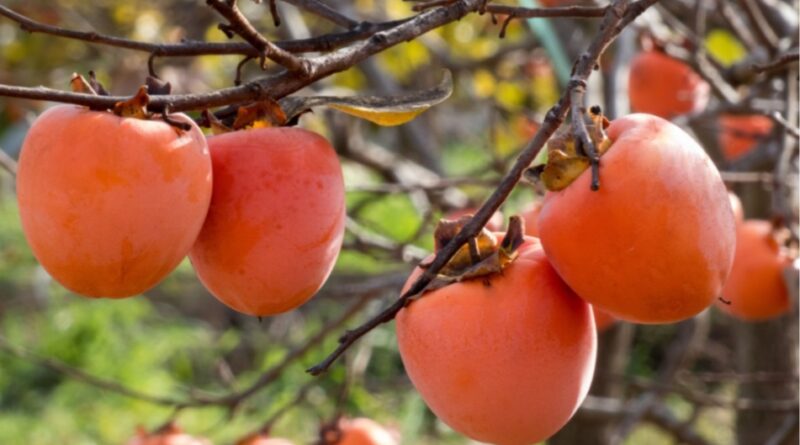Japanese Persimmons: The New Favorite Among Himachal Pradesh Orchardists
In Himachal Pradesh, Japanese persimmons are quickly becoming the new favorite among orchardists, following the popularity of apples. Farmers in districts like Kullu, Mandi, Shimla, and Rampur are increasingly purchasing Japanese persimmon plants for their orchards. This trend isn’t just local; the demand for these fruits is growing beyond Himachal Pradesh, reaching as far as Kerala in the south and Assam in the northeast.
Local nurseries in Kullu are bustling with activity, preparing shipments of Japanese persimmon plants for these states. Over five thousand plants have already been sent to Kerala and Assam. While Kerala’s orchardists are still experimenting with these fruits, Assam received its first batch of plants last season. Additionally, orchardists from neighboring Punjab and adjoining areas are flocking to Kullu nurseries for plum plants, which are in high demand. Shimla, Kotkhai, and Rohru orchardists are also visiting nurseries to buy apple plants.
Kullu nurseries have prepared around 1.9 million plants of apples, plums, and Japanese persimmons, with about 1 million already sold. Recent rains have boosted the purchase of these plants. There are over 200 registered nurseries in Kullu, providing high-quality plants to orchardists.
Orders for apple, pear, plum, and Japanese persimmon plants are pouring in from the horticulture department. Nursery operator Banwari Sharma mentioned that Japanese persimmon plants are being sent to Kerala and Assam, and by the end of January, 80% of the nursery stock is expected to be sold out. The demand for apple, plum, and pear plants is also rising, with orchardists from Punjab, Shimla, and Uttarakhand reaching out for these plants.
Roshan Anand, a subject matter expert from the Horticulture Fruit Development Project, highlighted the high demand for new saplings of apple, Japanese persimmon, plum, and other fruit-bearing plants from Kullu nurseries. These plants are also supplied to other states, including Uttarakhand, Assam, and Kerala. Orchardists are advised to always take a bill from the nursery after purchasing plants.
Price of 300 plus Rupees per Kilogram
The Fuyu and Hachiya varieties of Japanese persimmons are being produced in Kullu district. The Fuyu variety is particularly popular in the market, fetching prices up to 230 rupees per kilogram. The Fuyu variety can be eaten raw, while the Hachiya variety needs to be fully ripe before consumption. Six varieties of Japanese persimmons are produced in the state: American Persimmon, German Persimmon, Fuyu, Hachiya, Texas, and Peruman. The production of Japanese persimmons is higher in areas like Lag Valley, Manikaran, Gadsa, Bajaura, Jhidhi, and Hurla in Kullu.
Japanese Persimmons Contain Vitamin C
Japanese persimmons are rich in nutrition and vitamin C, making them highly sought after. In Kullu district, the Japanese persimmon season starts after the apple season ends. These days, trees laden with Japanese persimmons are a common sight, attracting many. While other fruit plants are empty by December, Japanese persimmon plants remain full of fruits.
Japanese persimmons were first grown in China and then spread to Japan and Korea. They were introduced to India in 1921. In 1941, orchardists in Shimla planted Japanese persimmon plants among apple plants. Today, it’s estimated that around 10,000 orchardists in Himachal Pradesh are cultivating Japanese persimmons on their land.



